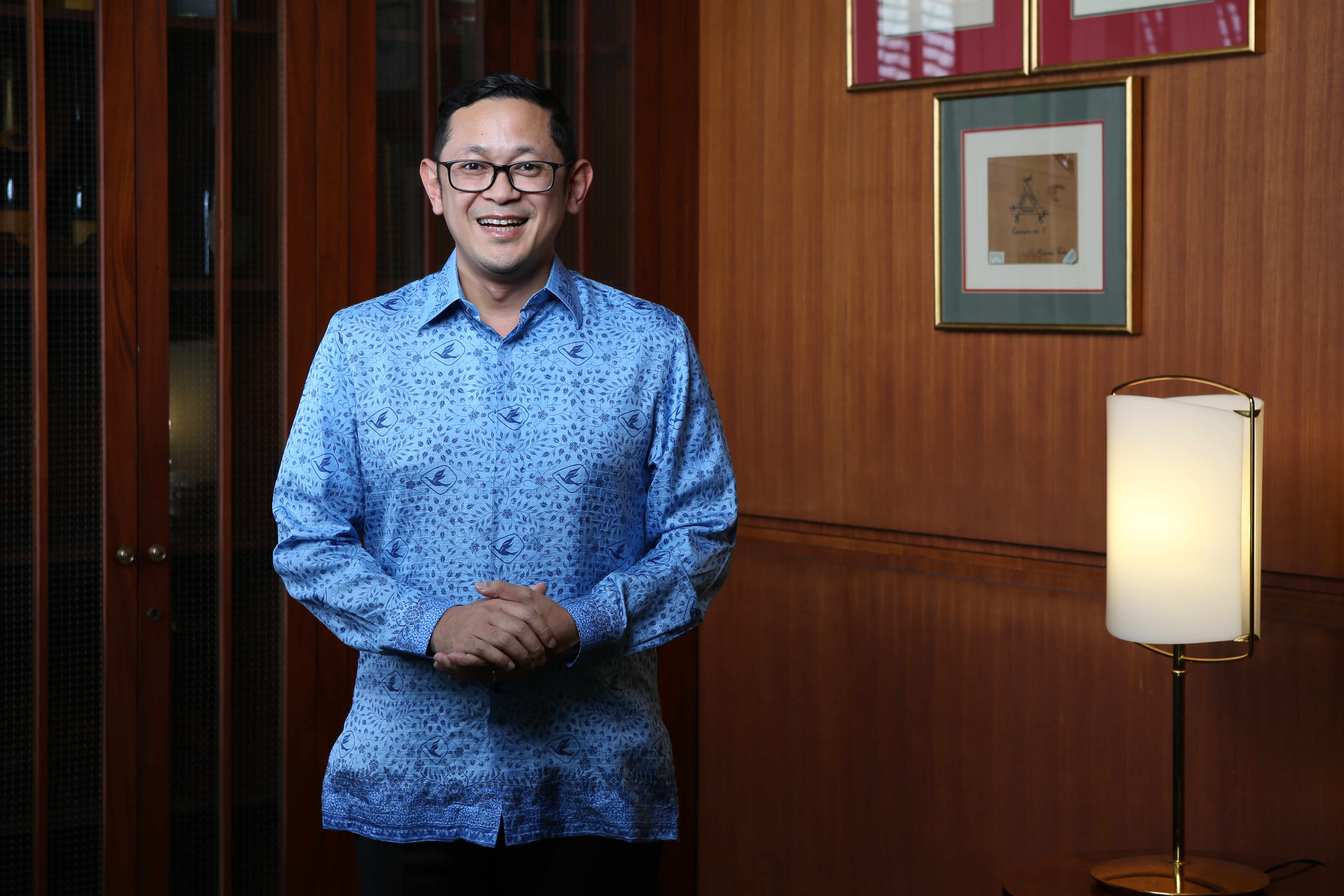Indonesia’s largest taxi operator, Blue Bird Group, became the first fleet operator to introduce electric vehicles in May, starting in Jakarta. This launch came ahead of a Presidential Decree released in mid August, which encourages the development of a domestic manufacturing hub for electric vehicles.
At that time, Blue Bird’s management said it has bought 30 units of electric vehicles, worth IDR 40 billion [roughly USD 2.8 million] consisting of two models: Chinese automakers BYD’s BYD e6 as the regular taxi and Tesla’s Model X 75D for premium taxis.
KrAsia interviewed Adrianto Djokosoetono, the director of Blue Bird, regarding the experience of operating the firm’s small fleet of e-taxis, the obstacles and expectations for the electric vehicle market in Indonesia.

KrAsia (Kr) : Blue bird had launched the e-taxis before the decree came out. Could you tell us about your experience using electric vehicles?
Andrianto Djokosoetono (AD) : We actually started planning for this two years ago. We stuck with our plan and we launched the fleet on Earth Day. We need a catalyst to encourage electric vehicles implementation [in Indonesia]. There are still many questions, what would it be like to drive in an electric vehicles. With e-taxis, people can experience this first-hand.
Kr : What are the obstacles you’ve come across while operating the e-taxis in Jakarta?
AD : The investment costs are high. Currently, we are using our Research and Development budget for this. These cars are not widely available here yet, so we don’t have much choice. The electric car manufacturers from all three continents, America, Europe, and Asia are all with the steering wheel on the left. Only few offer models with steering wheels right. [Indonesia is one of the few countries with left-hand traffic, where all vehicles drive on the left side of the road] This limitation means the costs are higher per vehicle.
The price of one EV for our regular taxi service is much more higher to one with conventional engines. I can’t give you the number, but the range, it can be five times more expensive.
Second, there’s a charging station issue. We can’t use a slow charging station [to keep the vehicles in the fleet moving], so we have to invest in fast charging station. Electricity costs, the infrastructure development of charging stations, the equipment; all of it adds to the burden of costs.
Kr: Do you feel EVs are more cost efficient compare to conventional cars?
AD : No, it’s still too far, the difference between gasoline and electricity is not enough to cover our investment cost.
For example, a regular car will need 10 liters for 100 km. Meanwhile, for electricity, it needs 26 kwh. In a year, the difference in usage, at a distance of 300 km covered, is only at IDR 25 million [IDR 1,700]. If the lifespan of the car is four years, the difference between non electric and electric is only IDR 100 million. It is not enough to cover the difference of purchasing price. However, the maintenance of an EV is easier, because a conventional engine needs many spare parts and oil. For an EV, we just change the electric motor and update the software.
Kr : Where do you charge your e-taxis?
AD : We have a charging station in our office, which is partially supported by PLN [The state-owned electricity company]. There are 15 charging stations so far. But we need more [fast charging stations] if we want to scale up our electric fleets.
Kr : The Presidential Decree on electric vehicles is now out. What things are you waiting for, what’s the next step?
AD : We are happy there is a legal umbrella now and that we we can expect the relevant ministries [to act on the decree]. We provide input from our experience as fleet operator. We have a number of proposals for the ministerial regulations derived from the decree. Currently there is a strong focus on how [the EV] industry will be supported in the future, but not so much on public transport operators or fleets.
Hopefully in the minister’s regulation, we can get more attention. For instance, the charging station problem. We hope there will be more fast charging stations in many places. We have recommended some strategic areas in the Greater Jakarta area. Moreover, we propose that our charging stations will also be available for use by the public. We are hoping for some incentives, such as financing options or loans with special interest rates from banks, because EVs are expensive. Hopefully, there will be a special interest rate for this industry to encourage people to buy it.
Kr : Are you planning to expand your electric fleet?
AD: We have a big dream. We usually buy around 4,000-5,000 cars per a year. In total, our fleet consists of 30,000 vehicles and we expect we can have 2,000 e-taxis in a few years.
Hopefully we can achieve this soon but it depends on the ecosystem. Now, we are still at the zero stage. We forecast the battery price will decline continuously, around 10 to 20 percent per year. If we see in the next 1-2 years the price becomes more feasible, and once the trial of vehicles has been completed, we can scale up faster.
Kr : Will you choose the same carmakers for your next e-taxis?
AD : We are open to every auto brand. That’s why we are hoping [our trial] can be a catalyst, either for domestic or global players. We are in talks with some Chinese automakers, including BYD. Meanwhile, for the premium one, we’re still using Tesla. In the future, we will expand our e-taxis in some regions, including tourism cities where the local government can support and provide the infrastructure for electric vehicles.
